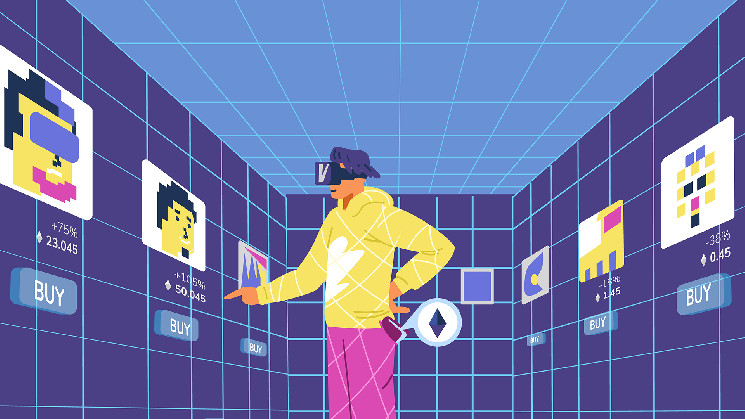NFT
The non-fungible token (NFT) market is evolving, and measuring its success depends on which metrics you’re looking at.
According to a new report released by DappRadar on Thursday, NFT trading volume for the month of May has reached $333 million so far, putting it on track to fall below $1 billion for the first time this year. In contrast, there have been 2.3 million sales executed so far this month and a notable increase in the number of weekly active wallets interacting with NFTs.
Sara Gherghelas, a blockchain analyst at DappRadar, told CoinDesk that the number of NFT sales appears to be on track to reach or surpass last month’s numbers, as opposed to trading volume, which is significantly lagging behind last month’s count. In her view, this could signal that there are more NFT traders in the market making smaller dollar-figure trades.
The number of unique active wallets linked to NFT activities grew by 27% in May, the report added, attributing the growth to the Miladys NFT collection – which received a notable pump from Elon Musk – as well as profits made from the hyped PEPE token that funneled back into the NFT market. This contributed to an uptick in on-chain activity, which sent Ethereum gas fees skyrocketing.
Overall, Ethereum (ETH) continues to lead the NFT market in trading volume, though other blockchains like Solana and Polygon have a higher number of NFT sales, with 26.9% of NFT sales taking place on Polygon and 13% on Solana, according to DappRadar.
“When it comes to the number of NFT sales, Ethereum’s [market] dominance slips to just 5.7%, indicating that the blockchain is primarily being utilized for conducting large volume sales, positioning it as the platform of choice for the ‘NFT aristocracy,’ the report says.
And finally, Blur and OpenSea remain at odds for NFT marketplace dominance, though both are excelling in different areas, DappRadar says. Blur wins by a significant margin in terms of trading volume, with around $181 million in trades this month, largely catalyzed by the release of its Season 2 rewards campaign and the launch of its lending protocol Blend. However, OpenSea continues to have a larger number of active NFT traders than Blur, suggesting that it continues to dominate with a mainstream audience.
Does trading volume even matter?
So what does this all mean?
Gherghelas told CoinDesk that trading volume remains an important metric for measuring success in the NFT market, though the number has the potential to be manipulated by wash trading, especially among collectors looking to earn rewards on platforms like Blur.
“We saw the market manipulation that was happening on Blur,” she said. “People are using the platform to farm [Blur tokens] and participate in airdrops.”
She added that Blur is not as concerned about the number of active traders on its platform, since it caters to a smaller number of professional traders with large pockets and expansive portfolios.
“Right now, if you go on Blur, you’re using Blur to buy expensive NFTs and this is its target,” she explained. “[Pro platforms] need the big money flowing in and don’t care about getting more users.”
Other data backs up Gherghelas’ observations. Nansen tweeted in March that much of Blur’s trading volume at the time came from just its top 100 NFT traders.
Still, she said trading volume remains an important metric, so long as you consider the context.
“I think the trading volume, at some points, is a very important metric to see exactly how much money is moving through the NFT market,” she said. “During the bull market, huge trading volume meant that a lot of people were coming into the space and that people were enthusiastic. You could have made a lot of money.”
“Right now, if the trading volume is down but the sales count is up, this means that we have the same amount of traders, but their behavior has changed.”
She added that it’s important to consider what type of NFT you’re looking at when considering trading volume. She cites the sale of parcels of land across metaverse platforms as different from sales of art-based NFT collections.
“When we look at the trading volume for the metaverse, I think that’s a whole different topic,” she explained. “The trading volume matters there because trading volume equals the utility of the land, which equals the profit that you can make. It’s the whole ecosystem. It’s a new economy there.”


